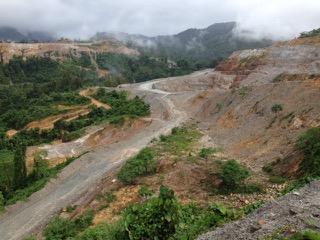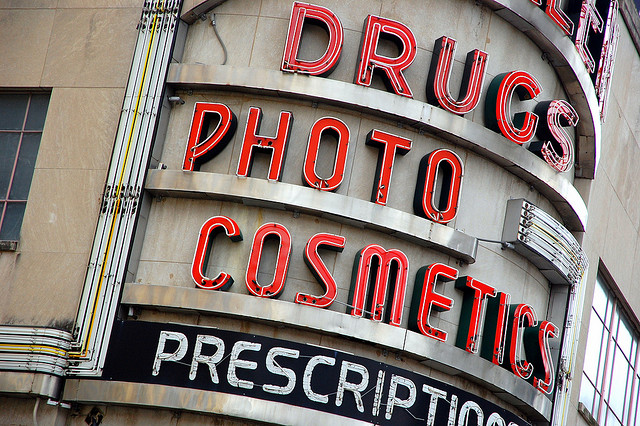As a supply chain consultant, I’m amazed by how little we know, and even ask, about the origins of the raw materials that go into our food, cosmetics and clothes.
When I look at the ingredients on the back of my moisturizer, I think, What are these things, how do you pronounce them and where in the world—literally—do they come from?
We know when we walk into a supermarket or a department store that the store itself didn’t manufacture and bottle its skincare products nor the ingredients that went into making them, but we also don’t bother to ask who did.
Over the past 30 years, globalization coupled with an exponential increase in demand for lower prices have forced the manufacturers of our everyday goods to search far and wide to meet demand and cut costs. The result? We’ve lost transparency and control on where and how our products are made.
The result is long and complex supply chains where retailers buy finished products from their suppliers, who buy components, products or parts from another tier of suppliers, who buy their ingredients or raw materials from yet another tier of suppliers. But since we only interact with the front end of the chain—without knowing anything about the retailer’s supplier’s suppliers—we are forced to trust the final link in the chain.
Consider face moisturizer. We buy it from a retailer who buys it from a manufacturer (such as Nivea or Lancome). Those manufacturers buy their materials from further down the chain. Their supply contracts require certain pricing and levels of quality and so forth, but they don’t go beyond that. Except in the case of some progressive retailers, manufacturers typically have sole discretion over how they buy ingredients, where their ingredients come from and what the ethical and sustainability practices of their raw material suppliers are. Similarly, their suppliers’ suppliers have sole discretion on where their materials are sourced. If retailers don’t have a way of auditing sources further down the chain, then consumers have no visibility at all.
To inform yourself about the safety of the ingredients in your favorite moisturizer, try Googling “10 beauty product ingredients you should avoid” and see how many hits it gets. Then check the labels of your favorite products and try to identify the ingredients you want to avoid.
It’s been widely reported that the Therapeutic Goods Authority (TGA) has determined the little nasties hidden in our beauty products to be safe in small doses. But we’re in the dark about the cumulative effects of their long-term usage.
Preservatives like parabens and formaldehyde are big-hitting offenders. Parabens in particular have estrogen-mimicking properties and have been found in breast cancer biopsies. Then there are synthetic colors and toluene, which are derived from coal-tar sources and petroleum. The list is extensive. However, even if your research are top-notch, labeling laws make it nearly impossible to identify and eliminate products with these ingredients. Toluene alone can also be marked as benzene, toluol, phenylmethane or methylbenzene.
Companies are also allowed under competition laws to list some ingredients as “fragrance only” if they claim that the ingredients are a trade secret. This leaves us unable to identify these fragrances, which could be a concoction of chemicals harmful to our health or aggravating to our allergies.
 On top of product safety and quality concerns in the extended supply chain, a number of humanitarian and environmental issues also lurk. The most insidious raw ingredient in cosmetics is palm oil. We consume palm oil on a daily basis, as it’s used in roughly half of our pre-packaged foods, from breakfast cereal and biscuits, to skincare and haircare products, where it is used as an emollient. Palm oil derivatives, which are chemically processed compounds, are also used to provide the detergent and foaming qualities of shampoos.
On top of product safety and quality concerns in the extended supply chain, a number of humanitarian and environmental issues also lurk. The most insidious raw ingredient in cosmetics is palm oil. We consume palm oil on a daily basis, as it’s used in roughly half of our pre-packaged foods, from breakfast cereal and biscuits, to skincare and haircare products, where it is used as an emollient. Palm oil derivatives, which are chemically processed compounds, are also used to provide the detergent and foaming qualities of shampoos.
In the intense global demand for palm oil, growers have forced local communities—particularly in Cameroon, Indonesia, other South East Asian countries and the Pacific Islands—off their land to clear forests and make way for palm plantations. This deforestation has a big impact on local communities as well as wildlife habitats, most notably the habitat of orangutans.
The trouble is that even if we want to avoid products containing palm oil, we can’t identify which items contain it because manufacturers aren’t required to specifically list it in ingredients. They are allowed to simply call it “vegetable oil.”
While we don’t know what’s going on behind the labels of our favorite products, it’s time to start asking questions. If we don’t start asking questions of ourselves and our retailers now, the next generation will be asking them of us. When the world wakes up to the humanitarian, health and environmental issues hidden deep within global supply chains, it will turn to our generation and ask, “How could you have let that happen?”
Sources:
Environmental working group – http://www.ewg.org/skindeep/
(US) FDA Cosmetic Labeling Guide
(Australia) Therapeutic goods association cosmetics
Industrial chemicals (notification and assessment Act) 1989
Author: Kate Nicholl
Editor: Evan Yerburgh
Photo: Steve Snodgrass via Flickr and author’s own







Read 0 comments and reply